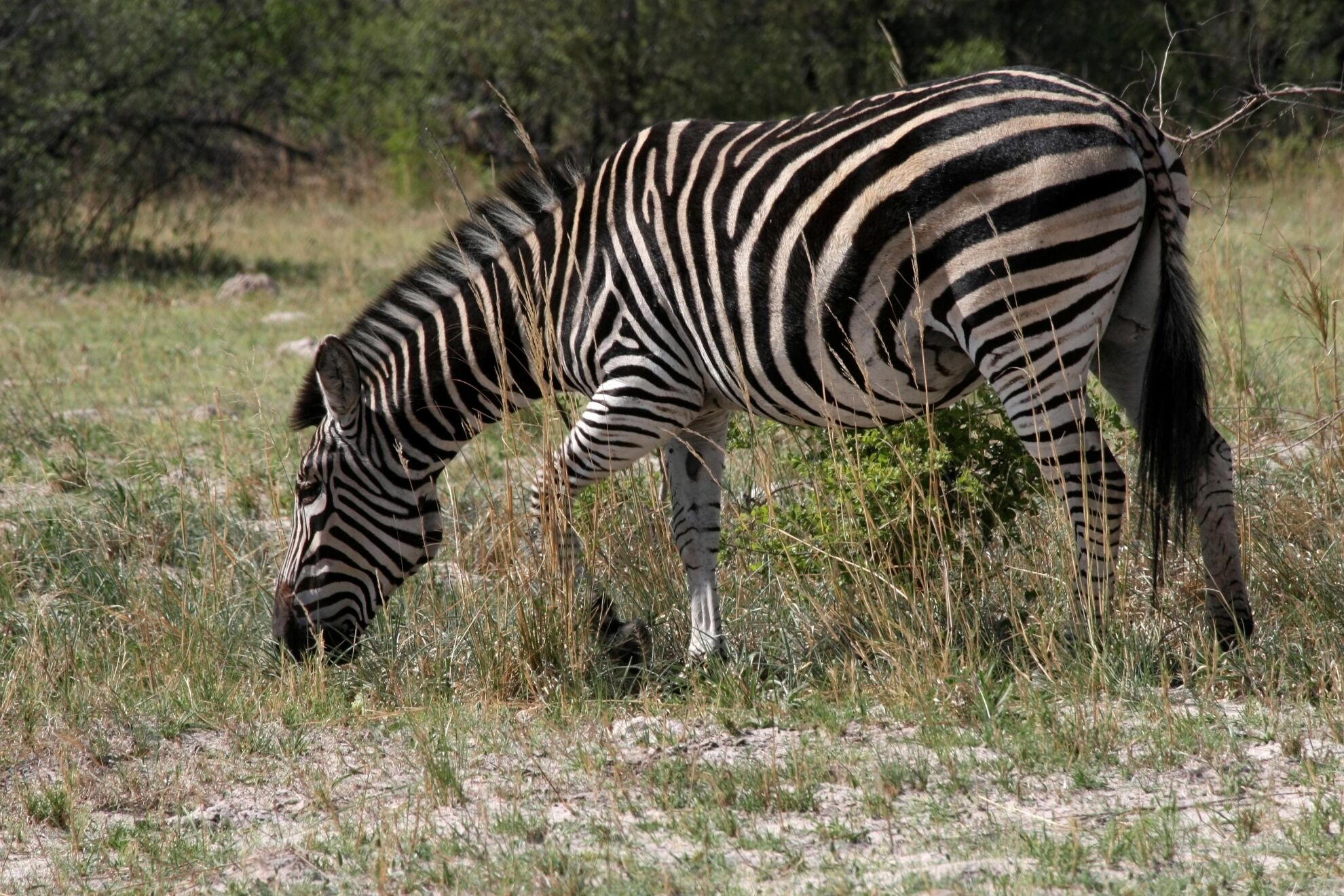

Hunting this black and white striped plains game species is almost seen as a rite of passage on an African hunting safari and is well worth the thrill of the hunt! Chapman’s zebra (Equus quagga chapmani), named after its discoverer James Chapman, is one of six recognized subspecies of the plains zebra (Equus quagga).
Inhabiting the open woodlands, shrublands, grasslands, and savannas of sub-Saharan Africa, they are found in Angola, Botswana, Namibia, South Africa, Lesotho, and Zimbabwe.
This highly sociable African plains game species forms small family groups called harems comprising one stallion, 1-6 mares, and their offspring. These harems at times form part of large herds that can reach thousands. During the dry season, they stay close to water, making easier targets for any African hunting safari, while during the wet season, they join the larger herd and migrate in search of better food resources.
The Chapman’s zebra is a herbivore, feeding on grasses, berries, and other plant sources.
While mating does happen throughout the year with a gestation period of 12 months, there is a definite peak in births during the wet season. Females give birth to one foal which is up on its legs and can walk and run within hours. This assists greatly in allowing the offspring to move with the herd and avoid predators.
While lions are the main predator for this African plains game species, they are also targeted by crocodiles, wild dogs, and hyenas.
The IUCN lists their conservation status as “least concern.”
Name:
Equus quagga chapmani
Male Weight:
485-709 pounds
Male Shoulder height:
3,9-4,2 ft
Range:
Sub-Saharan Africa
Mating:
Throughout the Year
Gestation Period:
360-396 days
Life span:
25-38 years
The Chapman’s zebra is the largest subspecies of plains zebra, with males tipping the scales at close to 800 pounds, and females reaching up to 700 pounds.
Foals are born with brown stripes, and some adults don’t develop pure black stripes but keep the dark brown stripes.
This black-and-white striped mammal differs from other zebras in that its stripes continue past its knees, and it has brown stripes in addition to the black and white ones. Additionally, the striped pattern on the lower half of its body is not completely black, and there is reduced shadow striping on its face and neck.
Targeting this African plains game species is often undertaken through the walk-and-stalk and spot-and-stalk options. Ambushing the zebra in an open terrain or near a water hole remains another method often utilized.
Zebras are a very alert species and stalking them undetected remains a huge challenge for hunters. The thrill of a successful African hunting safari with a striking and iconic zebra as its trophy remains a sought-after hunting adventure. Zebras are often hunted for their beautiful hides that make perfect additions to any trophy room.
Zebra hunting in Africa is a thrilling safari, be sure that you are well-equipped with your chosen rifle, with which you can accurately shoot for an ethical and quick kill. Zebras are extremely tough animals and popular rifle options include 30 caliber rifles with a minimum bullet weight of 150 grain or higher velocity rifles like the 7mm or 300 win-mag. Another option is the .375 which can also work well to bring down the Chapman’s zebra, the largest of the plains game subspecies.
Search from our range of Hunts across various popular destinations in Africa.
Find A Hunt